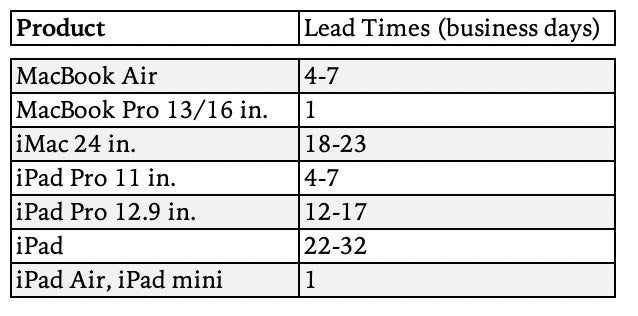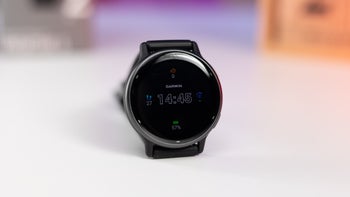Data shows more strength in demand ahead for the iPad Pro and the Mac

It appears as though the resurgence in iPad sales that we first spotted last year has a chance to continue on. The pandemic helped with the recovery of the tablet industry as more businessmen and students decided on using these devices to work from home. And at the end of the day, when all of the work is done, tablet users could turn to their slates to play mobile games, stream videos, listen to music, and more.
Demand from the pandemic led to an expansion in demand and lead times for the iPad and the Mac
During Apple's last earnings call in March, the company said that it will have a shortfall of tablets in the neighborhood of $3 billion to $4 billion this quarter. The tech giant said that "we expect to be supply-gated, not demand-gated." In other words, if Apple doesn't meet expectations for iPad sales for the the current quarter, it will be due to a shortage of available tablets rather than a shortage of demand.

Lead times for some current Apple devices
This is reflected in the longer lead times for deliveries of iPads and Macs. The lead time is the number of days between the placement of an order, and when the order is received by the buyer. The longer the lead time, the longer it takes to receive an ordered device which is indicative of a shortage in supply.
During periods when supply and demand are in balance, the lead time is generally less than two business days. According to venture capital firm Loup Ventures' check of Apple lead times, demand is stronger than supply for many devices with delivery dates for some products running longer than one month out. As a result, the research firm says that "things are going to get even better for Apple, driven by an accelerating digital transformation that we cannot yet fully comprehend."
Apple's March quarter showed strong annual growth rates of 79% in iPad shipments and 70% growth for Macs. At the same time, iPad lead times are running 22-32 business days out and 12-17 business days for the 12.9-inch iPad Pro. All of this suggests stronger growth ahead for the iPad. And with lead times for the 24-inch iMac at 18-23 business days, iMac and iPad Pro growth rates should continue to remain strong thanks to the pandemic's work and learn from home initiative and the switch to Apple Silicon's M1 chips for the MacBook Pro 16", iMac 27" and Mac Pro.
The five years leading up to the pandemic resulted in very little growth for Apple in iPad and iMac shipments. But with businesses, schools, and consumers deciding to upgrade their hardware, Loup and its analysts (including Gene Munster) forecast iPad and iMac revenue rising 8%, 7%, 6%, and 4% in FY22, FY23, FY24, and FY25, respectively. These results would be above estimates from Wall Street which would be above consensus estimates.
Lead times for the iPhone remain in balance at one business day
Meanwhile, lead times for the iPhone are in balance at one business day during the March quarter across the iPhone family. Also showing balance in supply and demand with a lead time of one business day are the iPad Air and iPad mini, and the 13-inch and 16-inch MacBook Pro models.
Munster writes in his report that "While interpreting lead times is more art than science, we've observed that during periods of supply demand equilibrium, lead times are typically less than 2 business days. Keep in mind, June is typically the slowest quarter for Apple, so if there was ever a quarter for the company to catch up supply with demand, it'd be this one."
There appears to be enough demand to go around to keep iPad and Mac sales rising even with the demand for tablets beginning to ebb from the strong work from home environment that originally created the strong lead times for tablets, laptops and desktop computers.
Follow us on Google News











Things that are NOT allowed:
To help keep our community safe and free from spam, we apply temporary limits to newly created accounts: